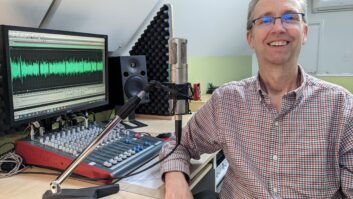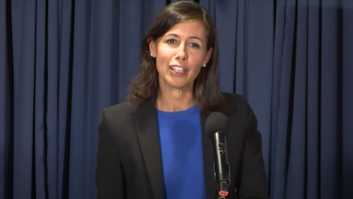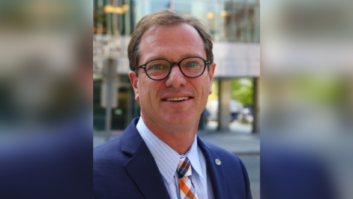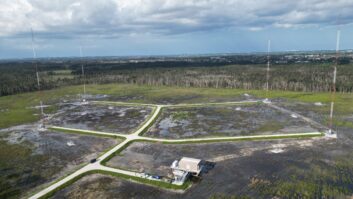Translators Today
Jan 1, 2011 1:00 AM, By Jeremy Ruck, PE
Lately it seems we have been thrust into an era of change. The FM translator service, like other communications services, is no different. It has undergone some profound changes in recent months — well sort of. As it turns out, the FM translator service, since its inception in the very early 1970s, has been subjected to several major technical overhauls.

Photo courtesy of fieldtouring.com
The most recent of these overhauls came in 1990. Prior to that time, the coverage area resulting from the permissible technical parameters was quite small. Under this overhaul, the FCC started defining power in terms of effective radiated power instead of transmitter power output. The result was a maximum permissible ERP of 250W rather than the previous limits of 1W TPO east of the Mississippi and south of 40 degrees latitude in California, or 10W TPO elsewhere.
If the translator was a “fill-in”, there was essentially no limitation on the center of radiation height so long as the translator did not serve to extend the primary service contour of the facility in any direction. The non fill-in facilities, such as those translating NCE stations were subject to two regionally based stair-step tables relating ERP to the center of radiation above average terrain. Intuitively this is quite sensible as it neutered the possibility of an enterprising broadcaster dropping in a translator with a coverage contour not much smaller than a full power station while bypassing the historical allocation mechanisms.
Translator variation
The concept of the fill-in translator became very important when the FCC finally got around to modifying the permissible service rules to allow an AM facility to be the primary station for FM translators. It should be noted that during the major 1990 rewrite, the subject of AM translators was discussed, and nixed by the FCC. Around that time significant changes to the AM technical rules were underway, and it was thought that improvements would occur in AM without the use of FM translators. Those improvements did not materialize, at least to the degree originally hoped, and the NAB, which in 1990 opposed the concept of AM translators, reversed course and submitted the petition for rulemaking resulting in the service change we see today.
The change in the rules to permit AM stations to rebroadcast via FM translators made no substantial technical changes. Rather, the modifications revolved around the permissible service sections. Because the 1mV/m contour of the translator had to wholly fit within both the 2mV/m daytime contour of the AM station to be translated and a 25-mile radius centered on that station’s transmitter site, the translator would be a fill-in facility. It would therefore not be saddled with the power/height tables previously discussed, but rather would be able to utilize a maximum ERP of 250W, in most cases, as long as interference criteria and the 2/25 coverage limits were met. This is undeniably huge for licensees operating AM stations with minimal or no nighttime coverage or those with very high nighttime interference levels. With some very profound, yet simple changes, the FCC increased the value of many translators and AM stations overnight.
To avoid a takeover of all translators by AM licensees, the FCC imposed a restriction that for a translator to be eligible to rebroadcast an AM facility, it must have been authorized, either licensed or have a valid construction permit, as of May 1, 2009. Although this provision is currently being appealed, as things stand right now, the remaining pending translator applications from the 2003 filing window would not be eligible to be used for AM facilities. Assuming the appeal of this provision is not granted, a situation down the road where swaps are taking place to work around this provision is not far-fetched. Indeed we even see some shades of this right now with stations trading IBOC FM channels and the like.
— continued on page 2
Translators Today
Jan 1, 2011 1:00 AM, By Jeremy Ruck, PE
A cap
In the 2003 filing window, colloquially known in some circles as “the Great Translator Invasion”, some 13,000 application were filed. Of those, approximately 7,000 are still pending, which has been the case since about 2007. In December of that year, a cap of 10 pending applications per applicant could remain, with the remainder dismissed, was proposed by the Commission. The thought was this would reduce the processing backlog since many of the remaining applications were mutually exclusive with others, and were thus subject to a comparative selection process. Although a few applicants were likely engaged in questionable filing practices, many of those affected by the cap had expended time and resources filing for facilities they genuinely intended to construct and operate. No doubt what amounted to an ex post facto change in policy, despite the apparent good intentions of the FCC, was received poorly.
Since 2008, when the cap was suspended, little has happened with translators other than the permissible service change. There is no doubt that this realignment has greatly enhanced the visibility and desirability of translators, but it has done little to address the pending applications, the cap, or the conflict between translators and the LPFM service. With finite spectrum availability and the pent up filing demand partially resulting from infrequent filing windows, skirmishes have no doubt resulted.
Fast forward to 2010 where we find a proposal jointly crafted by Educational Media Foundation and Prometheus Radio Project presented to the FCC. The original proposal, which was not well received by the NAB and NPR, recommended that an LPFM window be opened without implementing the cap or dismissing any translator applications. The translator applications would become secondary to LPFM applications, and would be dismissed if found in conflict. An amendment to this proposal, opposed by a whole bunch of commercial broadcasters, recommended that any applicant with fewer than 10 translator applications could select one for grant, then the LPFM window would proceed. The opposition instead recommended opening a settlement window first, which would no doubt eliminate some of the MX problems and avoid the unpalatable cap and related dismissals.
As we begin a new year, there is still no indication from the FCC when or how it will address this issue. Equally unknown is whether any of the compromises will be utilized, or whether the FCC will strike out on its own in a different direction. Over the past couple of years we have seen a simple modification to the translator concept that has greatly aided AM stations. Perhaps there is some irony that those strides have been coupled with nearly eight years of limited movement on half of the originally filed translator applications. Maybe things haven’t changed as much as we originally thought.
Ruck is a senior engineer with D.L. Markley and Associates, Peoria, IL.
January 2011
An update on EAS, a tour of the new Corus Quay facility in Toronto, and field reports on the Broadcast Tools Audio Sentinel Adobe Audition for Mac….












